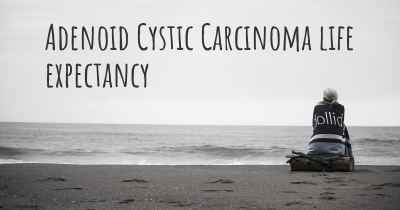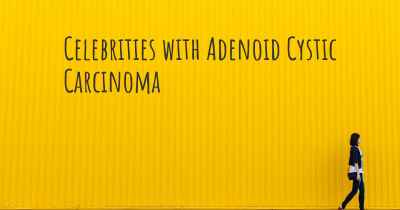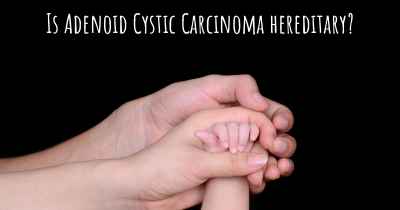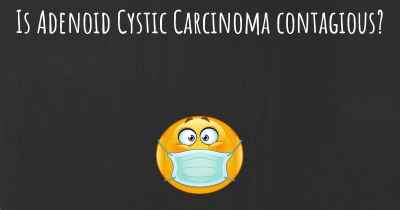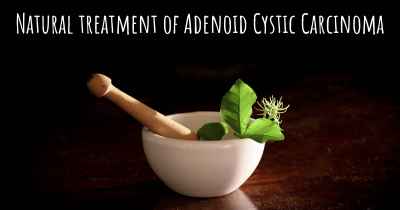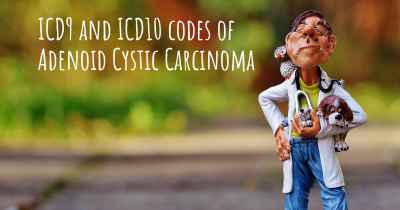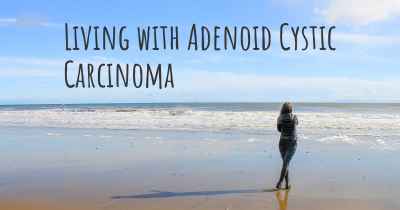What is the history of Adenoid Cystic Carcinoma?
When was Adenoid Cystic Carcinoma discovered? What is the story of this discovery? Was it coincidence or not?
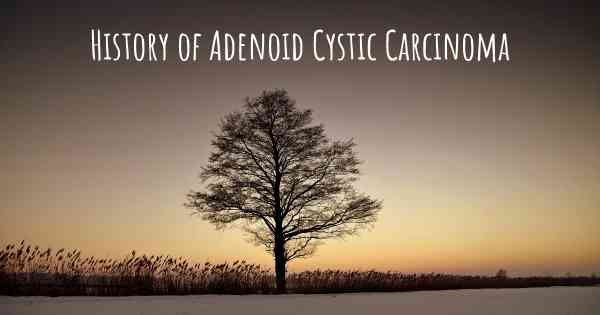
Adenoid cystic carcinoma (ACC) is a rare form of cancer that primarily affects the salivary glands, but can also occur in other parts of the body such as the breast, lacrimal glands, and trachea. It is characterized by slow growth and a tendency to invade surrounding tissues and nerves, making it a challenging disease to treat.
Historical Background:
The history of adenoid cystic carcinoma dates back to the early 19th century when it was first described by Sir James Paget, an English surgeon, in 1853. He initially referred to it as "cylindroma" due to its cylindrical growth pattern. However, it was not until 1854 that Dr. Billroth, an Austrian surgeon, coined the term "adenoid cystic carcinoma" to better describe the tumor's histological features.
Understanding the Disease:
Adenoid cystic carcinoma arises from the secretory cells of various exocrine glands, particularly the salivary glands. It is characterized by the formation of small, glandular structures surrounded by a dense fibrous capsule. The tumor cells have a tendency to infiltrate surrounding tissues, leading to local invasion and potential distant metastasis.
Incidence and Risk Factors:
ACC is a relatively rare cancer, accounting for approximately 1% of all head and neck malignancies. It affects both males and females, with a slight predilection for females. The average age of diagnosis is around 50 years, although it can occur at any age. While the exact cause of ACC remains unknown, certain risk factors have been identified, including exposure to ionizing radiation, occupational exposure to certain chemicals, and genetic predisposition.
Clinical Presentation and Diagnosis:
The clinical presentation of ACC varies depending on the site of origin. In salivary glands, the most common location, patients often present with a painless, slow-growing mass. Other symptoms may include facial nerve weakness, difficulty swallowing, or changes in taste sensation. Diagnosis is typically made through a combination of imaging studies, such as CT scans or MRI, and a biopsy to examine the histological characteristics of the tumor.
Treatment and Prognosis:
ACC is notoriously difficult to treat due to its infiltrative nature and resistance to conventional therapies. The primary treatment modality is surgical resection, aiming to remove as much of the tumor as possible while preserving organ function. However, complete removal is often challenging due to the tumor's tendency to invade nerves and surrounding structures.
Following surgery, additional treatments may be employed, including radiation therapy and chemotherapy. Radiation therapy is commonly used to target any remaining tumor cells and reduce the risk of local recurrence. Chemotherapy, on the other hand, has limited effectiveness in ACC and is typically reserved for advanced or metastatic cases.
Prognosis:
The prognosis for ACC varies depending on several factors, including the site of origin, tumor size, and extent of invasion. ACC has a tendency to recur even after seemingly successful treatment, often many years later. Distant metastasis, particularly to the lungs and bones, is also a common occurrence and significantly impacts long-term survival rates.
Research and Future Directions:
Given the challenges in treating ACC, ongoing research aims to better understand the molecular mechanisms underlying the disease and identify potential therapeutic targets. Advances in genomic profiling have revealed specific genetic alterations in ACC, such as mutations in the MYB-NFIB fusion gene, which may serve as potential targets for novel therapies.
Furthermore, clinical trials are exploring the use of targeted therapies, immunotherapies, and combination treatments to improve outcomes for ACC patients. These efforts hold promise for the development of more effective treatment strategies and ultimately improving the prognosis for individuals affected by this rare and challenging cancer.
Posted May 19, 2017 by Carmenita 2650
Posted May 21, 2017 by Jen 2310
http://oralcancerfoundation.org/facts/rare/adenoid-cystic-carcinoma/
Posted Oct 17, 2017 by Peter 2500
